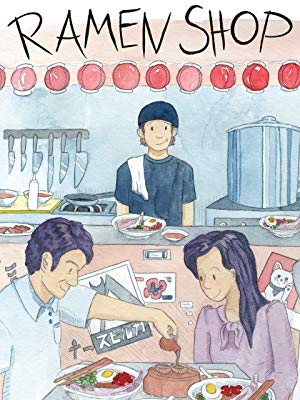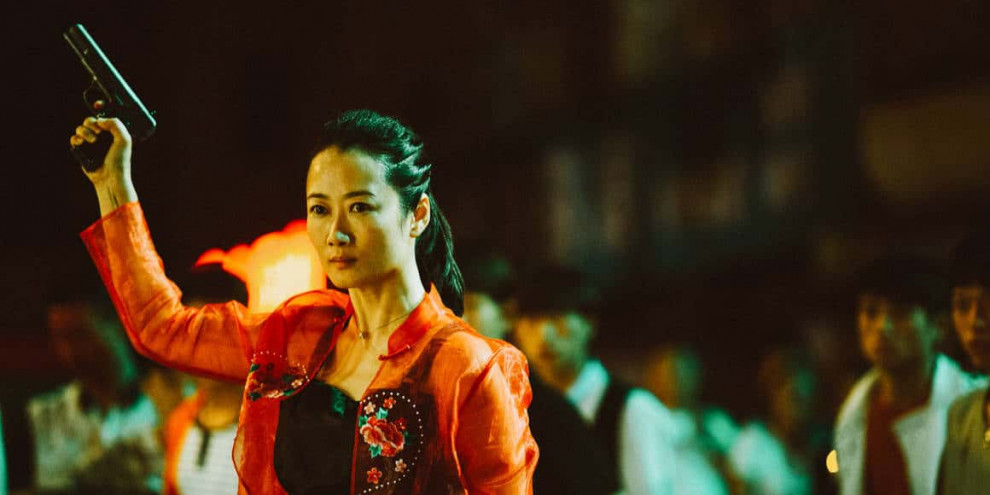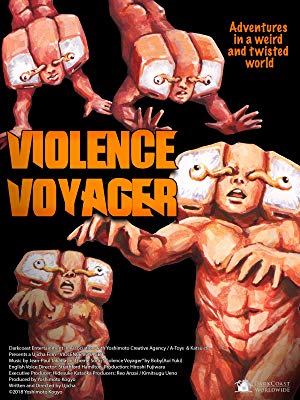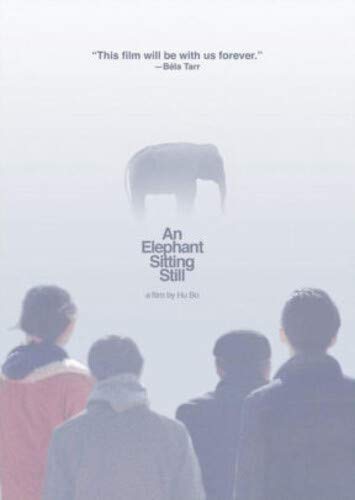20 of the contributors of Asian Movie Pulse have voted the 20 Best Films of 2018, resulting in what we consider a great selection, both regarding the top and the overall diversity, since the list includes films from Japan, S. Korea, China, Indonesia, India, Vietnam, The Philippines Thailand, and even a France-Belgium-Luxembourg co-production with a Cambodian setting, while the genres include everything from extreme violence and mainstream films to art-house, documentaries and animation, and even a Netflix film.
Without further ado, here are the best films of 2018, in reverse order. Some films may have premiered in 2017, but since they mostly circulated in 2018, we decided to include them. (By clicking on the title, you can read the full review of the film)
20. Buybust (Erik Matti, Phillippines)

All of the above make it quite clear that “BuyBust” presents a combination of “The Raid” and “The Villainess”, but I also thought that it shares some similarities with “Mad Max” particularly in the way the villains and the setting are presented. Nevertheless, in terms of presentation, the movie is a masterpiece of the genre, with even the fact that the protagonists appear to be superheroes and the script is a bit hyperbolic at times, adding at the overall flavor. (Panos Kotzathanasis)
Buy This Title
19. The Gun (Masaharu Take, Japan)

Masaharu Take directs a black-and-white film that shares much similarities with “Crime and Punishment” in its basic premise and much with the Japanese New Wave (and subsequently the French Nouvelle Vague) in its visual approach. The gun, in that fashion, is just a tool to explore a very interesting character in Toru, and to progress the story into a path that allows him to make a number of social and philosophical (existential) comments. (Panos Kotzathanasis)
18. Ramen Shop (Eric Khoo, Japan)

The invaluable consultations from chef Keisuke Takeda and Dr Leslie Tay help craft a world where the kitchen comes out on top, where the power food possesses is let loose whilst its well-directed human components have no choice but to give in to its pleasing succulence. Caring to the core it is impossible not to be swept up by the flavours coursing through its soul; it feeds the heart as much as it does the stomach. A perfect way to close the festival. (Jamie Cansdale)
Watch This Title
17. Girls Always Happy (Yang Mingming, China)

Through Wu and Mother's altercations ” Girls Always Happy” touches sideways many hot topics like the hassle of surviving on the fringe with creative work, “locating and re-locating” in big cities, the role of single women in Chinese society and the struggle of finding their place in it. The film's finale is on a comic note with a hilariously honest poem read by Wu. Genuinely and unashamedly funny. (Adriana Rosati)
16. Violence Voyager (Ujicha, Japan)

Victims are shown to be impaled with metal poles, harm their arms ripped off, disemboweled or just ripped to pieces. Non-lethal injuries, from being sprayed with accident or shown with melted body parts, run rampant in the film much like the actual body modification processes shown. On top of it all, the gratuitous and frequent child nudity for both male and female children, many of whom are barely double-digits in age if that, creates such a disturbing and uncomfortable feeling that permeates itself in the latter half when the action kicks up. Coupled with the obscure animation style, there's not much else to the effort. (Don Anelli)
Watch This Title
15. The Third Wife (Ash Mayfair, Vietnam)

“The Third Wife” is a film about beauty, about initiation and finding one's place in life. Its director has a confident vision, an interesting take on the composition of images which is supported by great cinematography, writing and a wonderful cast. It offers a view into a world which seems long gone, but its patterns seem strangely familiar for the place May is in, the search of finding a balance between the self and what is expected of her, is a task we all have to face eventually. And more than once. (Rouven Linnarz)
Buy This Title
14. Dead Souls (Wang Bing, China)

It is hard to say if “Dead Souls” entertains the audience as ordinary commercial films do; instead, it exposes painful memories. However, this movie has a value as it enlightens people, in order to prevent the massacres of the past. In addition, it reveals that the role of a film is to capture the essence of society. (Marie Lee)
13. Psychokinesis (Yeon Sang-ho, S. Korea)

Taking a seemingly familiar tale of a man trying to make up for lost time and repair a damaged relationship with his child, and mixing it with the action genre is nothing new to cinema. But through excellent acting and story telling, there are moments of genuine heart that makes it feel less forced than most others who have attempted.(Nathan Last)
Buy This Title

12. Funan (Denis Do, France/Cambodia (setting)

“Funan” is a tale about what connects people, what makes them human, especially under difficult conditions. Changing between moments of extreme beauty and love to those of violence and depression, “Funan” is a touching film which will likely find an audience willing to take an unforgettable journey with its characters (Rouven Linnarz)
Buy This Title
11. Manto (Nandita Das, India)

“Manto” is a heartfelt portrait of a writer who has been much loved in the Indian subcontinent. It paints a vivid picture of a country that had just gained independence, something which it fought hard for and was almost immediately plunged into the turmoil of partition, along religious lines. The incident had a deep effect on Manto and troubled him for the rest of his life as he reluctantly left the city he loved, Bombay, to move to Pakistan. It is a sympathetic look at the riot-torn nations of India and Pakistan, through the eyes of an artist who himself deeply felt and intricately expressed the woes of Partition. Powered by a keenly observed and deeply sensitive portrayal of a writer sensitive to the turmoil around him from Nawazuddim Siddiqui and an acting ensemble that rarely ever skips a beat, “Manto” is a truly remarkable film which is going to intrigue audiences irrespective of their familiarity with the artist's writings (Vidit Sahewala)
Buy This Title
10. Manta Ray (Phuttiphong Aroonpheng, Thailand)

“Manta Ray” is not a piece of political statement, nor it is a futile exercise in form. It is an accomplished debut feature, an immersive, strong experience that needs to be seen, heard and felt. (Marko Stojilkovic)
Watch This Title
9. Mori, the Artist's Habitat (Shuichi Okita, Japan)

Okita once again is observing his characters moving in the Petri dish of their own environment, small communities, small teams or small spaces. Here we never see the painter painting but just inhabiting happily his microcosm. Beyond the easy moral of finding hidden treasures in simple things, the film is a wonderful waltz of alternate perspectives and proportions. (Adriana Rosati)
8. One Cut of the Dead (Shinichiro Ueda, Japan)

The film mocks every aspect of the entertainment industry, and this seems to be Ueda's foremost purpose. In that fashion, “One Cut of the Dead” parodies the occasional strictness of the directors (the harsh behaviour usually associated with auteurs actually), having Higurashi yell “Action” at the most inappropriate times, not to mention the fact that he has used actual zombies in order to make his film more realistic. The caprices of the movie stars also get their share of mocking, as do the ridiculous demands of the industry producers, along with the fact that the majority of people in the industry consider TV shows of low quality. Furthermore, the struggles of low budget productions are also presented and mocked, while one has to laugh with the concept of the drunken director of photography, who actually ends up playing the zombie. Lastly, the role of the scream queens, the self-defense lessons for women, and “The Method” also get their share. (Panos Kotzathanasis)
Buy This Title
7. Ash is Purest White (Jia Zhangke, China)

Jia Zhangke highlights the changes China have been experiencing during the last decades, as tradition has succumbed completely to technology, speed and the relentless pursue of money. The way the director presents these changes is one of the film's best assets, through a number of entertaining and meaningful episodes and “tricks.” (Panos Kotzathanasis)
Buy This Title
6. Blood of the Wolves (Kazuya Shiraishi, Japan)

Kazuya Shiraishi directs a very entertaining film, building on a combination of Kinji Fukasaku's aesthetics as dictated in the “Yakuza Papers” and the style of “Training Day”. The “Yakuza Papers” one derives from the narration of the events that are not depicted on screen, as from a newspaper article, and the depiction of the Yakuza, with their constant thirst for violence, the extreme accents, and the games for power and domination between the various gangs. The “Training Day” axis derives from the relationship of the veteran Ogami and the “rookie” Hioka, with the first taking the latter for a ride in the complex politics that shape the ties between crime and punishment, and the actual situation in the area. Shiraishi, though, takes this concept a step further, by eventually presenting a second layer in Ogami, which offers a plot twist that turns the film completely around, both regarding the veteran, and his relationship with the rookie. (Panos Kotzathanasis)
5. An Elephant Sitting Still (Hu Bo, China)

It's hard to deal with the feeling this film and context provokes, since the movie feels like a farewell letter, or as if Hu Bo wanted to blow off some steam to the audience. A hard declaration against the world, representing how hard and dark life can get, “An Elephant Sitting Still” is a wonderful film masterfully crafted and acted. (Pedro Morata)
Buy This Title
4. The Night Comes For Us (Timo Tjahjanto, Indonesia)

Timo Tjahjanto directs a movie that is dominated by two elements, which actually complement each other: action and violence. Regarding the first, one can only admit that the work done on the action choreography and the stunts (by Iko Uwais and his team) is more than impressive, with them keep finding new ways and “tricks” to implement, a trait that was also quite visible in “Headshot”. In that fashion, anything can be used as a weapon, from animal bones (in the scene in the butcher shop) to pool balls and even a sign that read “Caution Wet Floor”. The “normal” weapons are here of course, including guns, machetes, but most of all, all kinds of knives, which provide the most impressive scenes on the film, along with the hand-to-hand ones. (Panos Kotzathanasis)
3. Killing (Shinya Tsukamoto, Japan)

Once violence ensues, no one remains unaffected, despite his degree of involvement, and the closing of the cycle is as difficult as its opening is easy. Tsukamoto's approach towards the presentation of the aforementioned borders on the extreme, as he does not shy away from the violence even a bit, with the tendency finding its apogee in the scene in a small cave, which could be easily described as butchering. The amount of violence in the film, however, does not hide his messages by any means, as his hatred for war and violence in general extends to the concept of revenge, human nature (in terms of how people cherish violence when they benefit from it), and the fact that samurai swordsmanship may look impressive and noble, but in reality, its only purpose is to kill (Panos Kotzathanasis)
2. Shoplifters (Hirokazu Koreeda, Japan)

Koreeda explores the concept of family and what, actually, makes one. Again, he stresses the fact that blood relations are not as important as people usually consider, as much as the fact that love can come from any place. This opinion is highlighted throughout the film, but particularly in the heartbreaking finale, which establishes this viewpoint in the most shocking way. (Panos Kotzathanasis)
Buy This Title
1. Burning (Lee Chang-dong, S. Korea)

Lee Chang-dong and co-scriptwriter Oh Jung-mi have blended two novels from different eras and countries, embedded them in a bona fide South Korean contest and succeeded in creating a beautiful, contemporary and at the same time universal metaphor of youth discomfort. (Adriana Rosati)



























Fantastic List…
Watching BuyBust tonight can’t wait…
*Although personally I would have Shoplifters over ‘Burning’
Yes I don’t understand why in many year end list Burning is ranked above Shoplifters.
Great list anyways thx.
Long day’s nourney ito night
only one out of 20–u missed 19 better ones way way better ones-steel rain should b top 5
Can’t believe ‘Psychonesis’ is in the best Asian movie list, it should be in the worst list. Should make worst Asian film list of the year plus Best Asian indie film list which are getting popular in the festivals.
Dark Figure of Crime is better South Korean film last year.
Anyway, there were over 200 Japanese films releasee last year, some are better than what u have included in the list.
Tiger – Agreed :-(